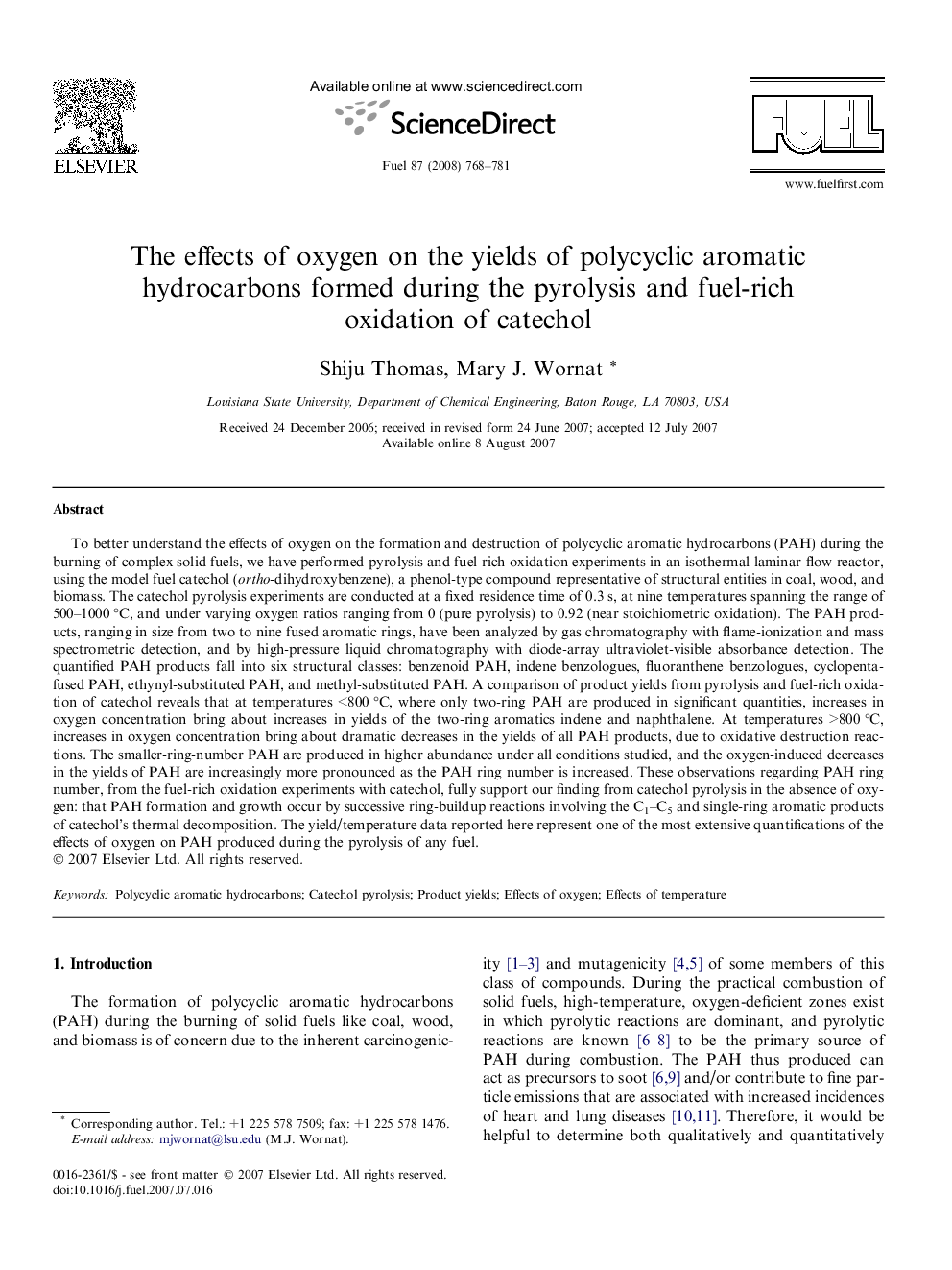| کد مقاله | کد نشریه | سال انتشار | مقاله انگلیسی | نسخه تمام متن |
|---|---|---|---|---|
| 207755 | 461225 | 2008 | 14 صفحه PDF | دانلود رایگان |

To better understand the effects of oxygen on the formation and destruction of polycyclic aromatic hydrocarbons (PAH) during the burning of complex solid fuels, we have performed pyrolysis and fuel-rich oxidation experiments in an isothermal laminar-flow reactor, using the model fuel catechol (ortho-dihydroxybenzene), a phenol-type compound representative of structural entities in coal, wood, and biomass. The catechol pyrolysis experiments are conducted at a fixed residence time of 0.3 s, at nine temperatures spanning the range of 500–1000 °C, and under varying oxygen ratios ranging from 0 (pure pyrolysis) to 0.92 (near stoichiometric oxidation). The PAH products, ranging in size from two to nine fused aromatic rings, have been analyzed by gas chromatography with flame-ionization and mass spectrometric detection, and by high-pressure liquid chromatography with diode-array ultraviolet-visible absorbance detection. The quantified PAH products fall into six structural classes: benzenoid PAH, indene benzologues, fluoranthene benzologues, cyclopenta-fused PAH, ethynyl-substituted PAH, and methyl-substituted PAH. A comparison of product yields from pyrolysis and fuel-rich oxidation of catechol reveals that at temperatures <800 °C, where only two-ring PAH are produced in significant quantities, increases in oxygen concentration bring about increases in yields of the two-ring aromatics indene and naphthalene. At temperatures >800 °C, increases in oxygen concentration bring about dramatic decreases in the yields of all PAH products, due to oxidative destruction reactions. The smaller-ring-number PAH are produced in higher abundance under all conditions studied, and the oxygen-induced decreases in the yields of PAH are increasingly more pronounced as the PAH ring number is increased. These observations regarding PAH ring number, from the fuel-rich oxidation experiments with catechol, fully support our finding from catechol pyrolysis in the absence of oxygen: that PAH formation and growth occur by successive ring-buildup reactions involving the C1–C5 and single-ring aromatic products of catechol’s thermal decomposition. The yield/temperature data reported here represent one of the most extensive quantifications of the effects of oxygen on PAH produced during the pyrolysis of any fuel.
Journal: Fuel - Volume 87, Issue 6, May 2008, Pages 768–781